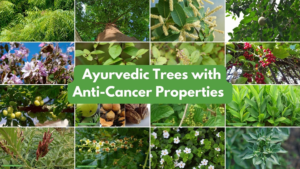We know trees are a beautiful form of life and contribute to nature and other living beings in various ways. Trees play a significant role in maintaining the balance of the environment. The countless benefits they provide to living species are of great importance. Since their lifecycle depends majorly on the surrounding climate, they get affected by climate change.
Climate and trees have their impact on each other and can cause significant changes in their existence. In this article, we will learn how climate change affects trees worldwide. Keep reading to understand various terms related to trees and climate and their impact on each other.
Climate Changes
Let’s begin with understanding what climate is and the possible effects of changes in climate that can affect trees.
Although we use the terms climate and weather interchangeably, climate refers to the average weather in a specific area over a longer time. We can describe climate with information on the average temperature in different seasons, sunshine, and rainfall. Chances of extreme weather conditions are often included in climate information. According to the World Meteorological Organization, climate usually refers to weather data averaged over 30 years.
Climate change indicates any systematic change in the long-term statistics of elements of climate, such as precipitation, temperature, wind, or pressure sustained over many decades or longer. Climate change may occur due to natural external forces or be human-induced. Let’s look at the causes and effects of climate change.
Causes of Climate Change
They are divided into two categories as, human causes and natural causes. Human causes refer to human activities such as generating power, manufacturing goods, cutting down forests (deforestation), using transportation, producing food, and powering buildings. These activities release large amounts of CO2 and other greenhouse gases contributing to climate change.
Natural causes include natural processes such as volcanic eruptions and changes in the sun’s energy, changes in the earth’s orbit and rotation, variations in solar activity, changes in the earth’s reflectivity, and changes in naturally occurring CO2 concentrations. Although these processes affect the earth’s climate, they don’t explain the global warming we have observed over the last few decades.
Effects of Climate Change
The severity of the effects of climate change is beyond our imagination, and we must work hard to minimize the human causes of climate change. The harmful effects of earth’s climate change include – hotter temperatures, more severe storms, increased drought, a warming, rising ocean, loss of species, scarcity of food, and more health risks.
When we look at the above list of effects, most of them affect trees worldwide. Hotter temperatures affect tree species that cannot tolerate heat. Severe storms cause risks to those tree species that are not wind-tolerant. Increased drought affects tree species that cannot survive without enough water. Thus several tree species get affected due to the earth’s climate change.
As responsible humans, it’s our responsibility to control our activities that affect nature and trees to maintain nature’s balance.
Global Warming
It is one of the elements of earth’s climate change that affects overall living species. Let’s understand the concept of global warming and how it affects trees worldwide.
Global warming refers to the long-term warming of the earth’s overall temperature. This warming trend has been going on for a long time; however, its pace has considerably increased in the last century due to the combustion of fossil fuels. Global warming leads to the “greenhouse effect” within the earth’s atmosphere. Carbon dioxide, nitrous oxide, methane, chlorofluorocarbons, and water vapor are greenhouse gases.
Global warming raises other issues, such as melting ice sheets and glaciers and expanding warmer seas. Thus carbon emission poses a severe threat to living species on earth.

Effects of Global Warming on Trees
Global warming causes overall earth temperature growth, and warmer temperatures and drier conditions work as external stressors for trees. It affects the natural lifecycle and development of trees.
There is some evidence that heat wave, induced by high CO2, helps beetles and wood ants eat the roots and stems of trees due to starvation. But, trees become dry from top to bottom due to extreme temperatures in some places.
Global warming also contributes to conditions such as droughts. Warmer temperatures promote evaporation and further dry soil and vegetation by reducing surface water. These dry soil conditions often lead to root damage and the death of trees.
Thus global warming causes harm to various species of trees and their productivity.
Tree Ecology
Ecology refers to studying the relationship between living beings and their surrounding environment. Trees also have a good relationship with the things around them, both living and non-living. Trees’ lifecycle and growth depend on surrounding elements such as sunlight, water, soil nutrients, and temperature.
When you understand tree ecology, it becomes easy to learn how climate change affects trees.
Usually, climate change causes fluctuations in the surrounding conditions of the trees. Not all species can survive changing environmental conditions due to a lack of adaptability. Beyond a specific tolerance limit, trees fail to survive extreme weather conditions.
Impact of Climate Change on Forests
Climate change is having an impact on forests both directly and indirectly. Here, we will see five ways in which forests are affected by climate change.

Tree Migration
As a result of climate change, some tree species seem to shift from their ranges and migrate into landscapes where they typically don’t grow. Climate change can make existing habitats unsuitable for tree species and create new habitats. And similar to any other living species, trees grow where they can survive.
Redistribution of species is not necessarily a bad thing. However, it is possible that some species of trees could go extinct, specifically those with small ranges. So if there are some tree species we’re concerned about, we must collect their seeds and plant them in regions where we think they will survive climate change.
Forest Fires
Every year, a large number of wildfires occur across the world, scorching acres of land, including forests. Climate change leads to warmer temperatures, drier vegetation, and deeper droughts. If these conditions persist in the coming decades, they will increase the intensity, extent, and frequency of wildfires.
We have created favorable conditions for wildfires, and they don’t seem to be changing anytime soon. In many regions, a huge network of roads prevents fire from spreading. However, a large fire can undoubtedly cause much damage by crossing these roads under favorable conditions.
Severe Droughts
There is an increased risk of more extended and more intense droughts with rising temperatures due to climate change. Dry areas across the world are likely to experience less precipitation. It won’t be wrong to say that recent droughts are the most severe and prevalent in decades or centuries.
Research shows that trees close their stomata, the pores that let in CO2, to respond to drought stress. Thus these trees are forced to rely on stored starches and sugars, and if they fall short of those energy sources before the drought gets over, they may die from ‘carbon starvation.’
Also, when trees lose a majority of water too quickly in a drought, air bubbles may form and obstruct water transportation to the leaves from the roots. This process can also result in death.
As some landscapes are becoming so dry, they cannot support forests at all. Although it’s pushing these forests out of their physiological limits, that doesn’t mean all trees will die. There are chances of some forests getting replaced by shrublands.
Pests and Pathogens
Trees exposed to a wildfire or drought may become less resilient to pathogens and pests. And forests can face increased outbreaks due to warmer, drier conditions in some regions because of climate change. Trees fall short of energy to defend themselves when affected by stressors such as drought and other challenging situations. These trees become more vulnerable to bacteria, viruses, insects, fungi, etc.
Pests and pathogens commonly occur at low infection levels in forests; however, they occasionally wreak havoc on trees. Climate change will probably expand the prevalence and range of forest pests and pathogens. The drier conditions and warmer temperatures, particularly drought-associated, can increase the reproductive rate of specific insect species.
Carbon Competition
In recent times, polluting companies worldwide have announced their plans to utilize forest carbon offset projects and achieve net-zero greenhouse gas emissions by 2050 since governments look to promote renewable energy technologies and investors demand sustainable practices. These projects let these polluting companies pay private landowners for capturing, storing, and preventing carbon dioxide from reaching the atmosphere.
Landowners can earn “carbon credits” for preserving trees by participating in these projects. They can then sell those credits to polluting companies, allowing them to continue to emit carbon dioxide. However, along with utilizing existing forests, some companies are buying and reforesting land to earn extra carbon credits. This strategy can create “economic uncertainty” for the forest products industry.
As a result of carbon offset projects, the prices of lumber, paper, and other forest products will probably increase in the coming decades since some landowners prefer receiving a yearly payment instead of waiting several decades to log and sell their trees. Also, some trees may be available for logging because of drought, wildfires, and insects, thus creating further upward pressure on the prices of forest products.
Conservation of Tree Biodiversity
We cannot deny the fact that trees and forests are essential for the survival of life on this planet. They can conserve tremendous biodiversity while fulfilling necessary ecosystem services like cycling of nutrients and water and climate regulation. Trees contribute to nutrition security and provide raw materials while offering countless livelihood opportunities.
Prefer a diverse range of tree species while planting as it has several environmental and conservation benefits. These species can provide a habitat for bees and birds. They improve water quality, protect against pests and environmental hazards, and protect soil and land from erosion.

Reforestation for Reversing Deforestation
Reforestation refers to the natural or intentional restocking of forests that have been depleted mostly through deforestation. Although it has some drawbacks, it is a good option for reversing deforestation. Here, the ultimate aim is to save ecosystems from destruction and protect the earth from damage.
The benefits of reforestation include – the restoration of lost biodiversity, reduction of CO2 in the air, restoration of water basins, reversing soil erosion, and protection of human health. There are two types of reforestation based on the area replanted – urban reforestation and rural reforestation.
After going through the above information, it is clear that climate change is impacting trees worldwide. Reforestation is a solution to this issue that needs to be implemented on a large scale. We are contributing to making this planet greener and better at Nelda Foundation. Join us to save nature!




